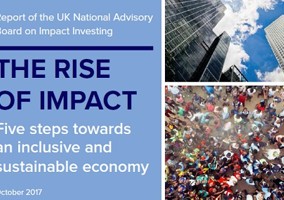Big Society Capital (BSC) has today launched a £30m social investment fund, one of its largest to date, for organisations that lend to small businesses.
The fund, called the Community Investment Enterprise Facility, is established by BSC and managed by Social Investment Scotland, and it aims to meet some of the capital needs of community development finance institutions (CDFIs) and help build a better understanding of their lending.
The fund will initially invest in up to five CDFIs, who will be partners that helped to develop the fund.
CDFIs are social enterprises that primarily invest in small businesses in disadvantaged areas, as well as charities and social enterprises.
BSC plans to expand the reach of the fund over time or by future initiatives. It said it hopes to raise at least a further £30m over the next three years alongside private investors.
Rebecca McCartney, investment associate at BSC, said: “Big Society Capital sees improving lives in disadvantaged communities as one of its core aims, and small businesses can play a vital role in this.
“The CDFI sector has already achieved a great deal, and it has even more potential to meet the need of small businesses in the communities they serve.
“Together with our partners, we believe we can realise this potential, principally through our capital but also building knowledge and convening stakeholders.”
Alastair Davis, chief executive of Social Investment Scotland, said: “This new facility, delivering capital at scale, is an important next step for the CDFI sector as a whole, and starts to align growth with more established CDFI movements in the USA.”
BSC has commissioned the Centre for Regional Economic and Social Research (CRESR) at Sheffield Hallam University to evaluate the facility over its duration, in order to provide a more robust evidence base for CDFI lending.
Chris Dayson, principal research fellow in CRESR, said: “An innovative feature of this project is the emphasis on robust data that is both accessible and transparent – an online data dashboard will provide up-to-date evidence about the progress and performance of the facility throughout its implementation.”
Related articles












